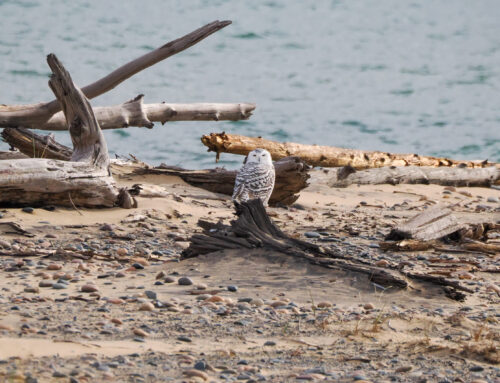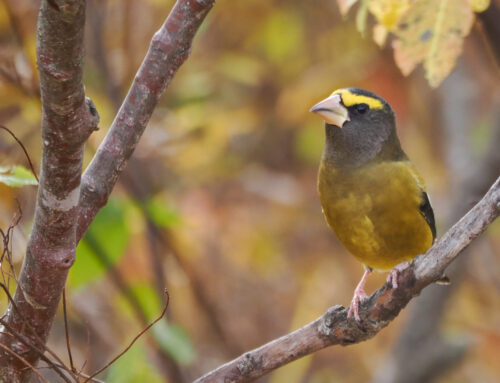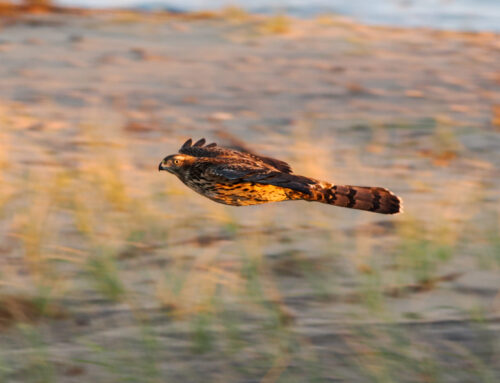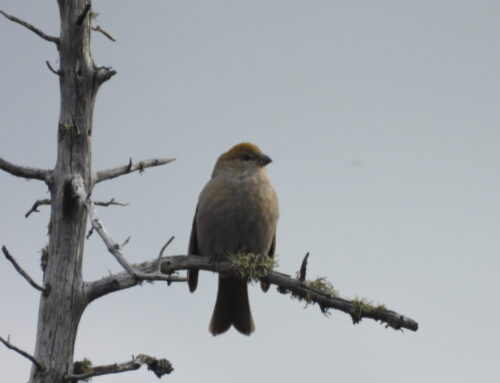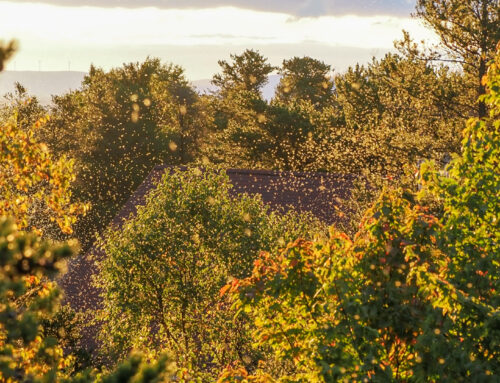
The small lake that formed on the beach during strong winds and rain on the last day of the season. Photo by Clay Bliznick.
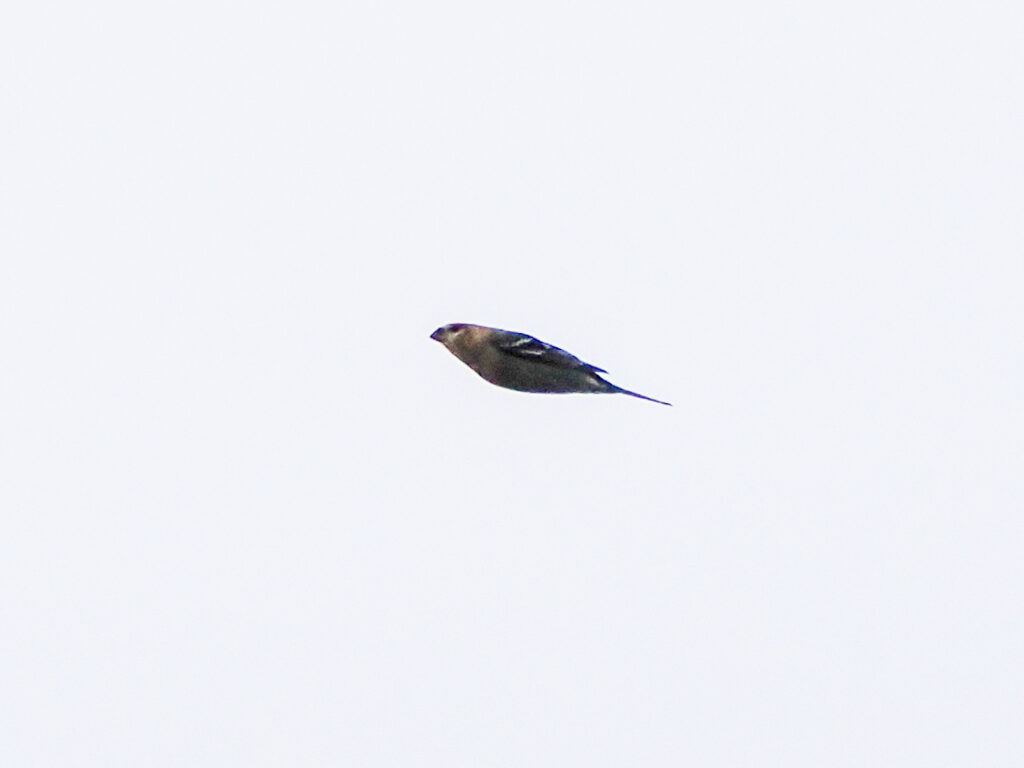
Pine Grosbeak in flight. Photo by Clay Bliznick.
The final weekend brought one last bird walk on November 15th, with four participants braving the blasts of wind and threat of rain. Despite the difficult weather, the walk turned out to be a memorable one. A flock of Redpolls fed on Evening Primrose seeds just feet away from the group near the parking lot restoration area, providing close and satisfying views. While looping out toward the beach, we stopped to scan the gulls in the harbor and picked out a much larger bird among them in binoculars. I mentioned it could be a Great Black-backed Gull, and after the walk, two participants, Karen and Malissa, headed down for a closer look and confirmed the identification. This first-cycle individual stayed throughout the afternoon/evening and became our 211th bird species of the fall and the final addition to this season’s WPBO species list.

Great Black-backed Gull landing on water just before dark at the harbor. Photo by Clay Bliznick.

Our marker board with the season total of species observed by Frank & I. The board shows a grand total of 210, but Great Black-backed Gull after the fact makes #211. Photo by Clay Bliznick.
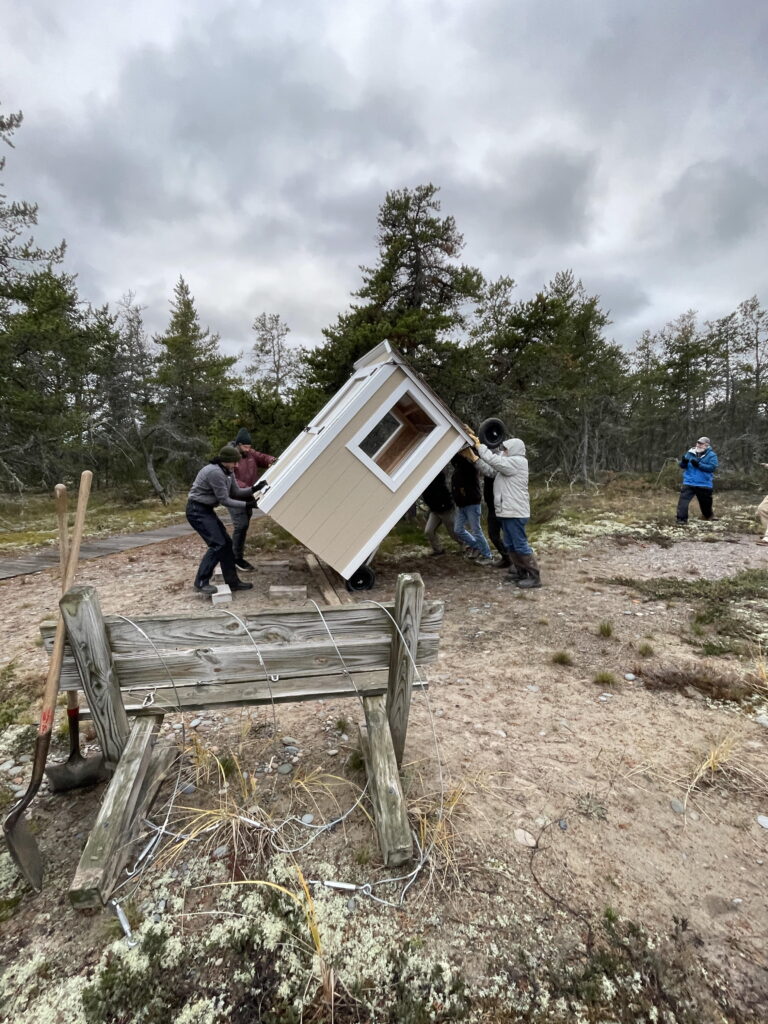
Getting the waterbird count station placed in its winter home. Photo by Susan Kielb.


